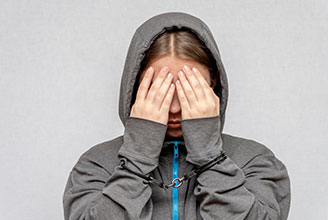Search

Young people, predominantly teenagers, discover thrill in breaking rules and doing things that can get them into trouble with the law. Juvenile crimes refer to offenses committed by individuals under the age of 18. More than 50,000 youngsters are arrested and detained on an average day in the New York. This means that nearly 2 million underage offenders go to juvenile jail or prison every year. The number of reported juvenile crimes have declined over the years, particularly due to stricter laws. Almost 75% of these crimes are misdemeanors, but the remaining are serious and violent offenses.
While punishment and sentencing is more lenient for underage convicts, the criminal record is damaging for their future; it is likely to interfere with schooling, employment, and personal/social relationships in the future. The law usually imposes fines on the parents, in order to urge them to keep their child safe. Criminal Defense Attorney New York, enlists the common types of juvenile crime cases in the state:
Underage drinking and controlled substance abuse are among the most common juvenile crimes all across the country. High school students in particular are often found in possession of alcohol and other hallucinatory drugs at private ragers. They consider intoxication as a necessary thrill or escape from worldly problems. Some teenagers are engaged by drug mafias for supplying these substances to the underage crowd.
Children under 18 are not permitted to purchase alcoholic beverages or cigarettes. However, many cheat the system by presenting a fake ID, disguising themselves as an adult, or by bribing the vendor. Some also use fake or stolen prescriptions to buy drugs that are otherwise not accessible.
Most teenagers under 18 do not have a job and get a limited allowance from their parents. Children from broken or poverty stricken homes usually have no access to money. Many youngsters shoplift to fulfill their basic needs and desires. Privileged teenagers commit theft for the fun, thrill, and challenge.
Vandalism is the intentional exploitation or destruction of someone else’s property, which can be public or private real estate. Common juvenile acts of vandalism include street graffiti/spray painting on walls, trespassing, breaking windows, and keying cars. Most of these crimes are non-violent, though they are still illegal.
Assault is a broad term, which includes verbal threats, harassment, and attempts to attack or physically harm someone. Many teenagers have a habit of getting into fights, arguments, and brawls that escalate quickly from cursing to carnage. Disorderly conduct also includes being noisy, vulgar/indecent, or abusive around people.
Status offenses can be referred to as violations of juvenile law, rather than criminal actions. These include staying out late/ignoring curfews, truancy (skipping school/classes), incorrigibility (disobeying parents), and running away from home.
Teens are often involved in different kinds of sexual offenses. While some teenagers are sexually abused by adults or other minors, several are capable of committing sexual assault and rape. Some may get caught into the prostitution business or juvenile sex trafficking. Sharing sexual content featuring any person under 18 can be charged as possession of child pornography.
Violent crimes comprise robberies, homicides, manslaughter, drunk driving accidents, rape, domestic abuse, armed attacks, school shootings, etc. These crimes are categorized as violent because they include substantial physical harm to human life.